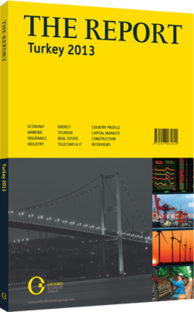The cutting edge: New technological advances are helping to produce and harvest crops
Robot tractors, geothermal greenhouses and cloned trees are part of the farming sector’s push to modernise, but more innovation is needed. The hot trend in the automotive industry may be self-driving cars, but a more practical and productive application has quietly taken place for years: driverless tractors. Turkey’s farmers can already turn to unmanned tractors guided by GPS and sensors while sowing and harvesting.
New Tech
A key player in this trend is John Deere, the world’s largest tractor manufacturer. Its 8R series debuted in Turkey at the Bursa’s Burtarim Agricultural Fair, the region’s largest trade show. Turkey’s biggest agricultural-equipment manufacturer, Türk Traktör, also produces a driverless model that the company claims can harvest what 10 conventional tractors can. To date, buyers of driverless tractors have typically been large-scale livestock farmers who grow their own feed and non-agricultural businesses that produce their own raw materials, such as cotton.
The need for “robot tractors” grows out of the increasing size of agricultural plots, brought about by farmland consolidation. The government's current strategy includes setting up larger-scale economic agricultural enterprises, which are more capable of implementing modern innovations. Even though Turkey is rich in farmland, the land has been split up due to inheritance, mainly, and ceases to be economical.
The government aims to unify 1m ha of land by 2023 in a first generation of land consolidation. Parcels of Turkish farmland are often as small as 1 ha, irregularly shaped and unconnected to roads. This makes access, irrigation and drainage all a challenge.
A signifier of the expansion of plot sizes has been a concomitant increase in the size of tractor engines. The average engine size in 2011 was 75 horsepower (hp); now it is 80 hp. Comparatively, the 8R is 310-360 hp.
It takes only one labourer – only as a security measure when driving across rougher terrain – to operate a robot tractor. While this will spell job losses in the medium term, the urbanisation of Turkey’s once largely rural workforce, which has been under way for at least two generations, will require technology allowing fewer men and women to tend the fields.
Greenhouse Effect
Heating greenhouses with thermal energy is an innovation particularly suited for Turkey, as the country has the greatest geothermal capacity in Europe. By 2009, there were over 2.1m sq metres of geothermally heated greenhouses, drawing a total capacity of 207.4 MW. Greenhouse owners want to build another 1500 greenhouses to keep up with demand, mainly from Europe, for heat-intensive products such as tomatoes, cucumbers and herb.
Although nearly 80% of fruit gene pools are available in Turkey, almost no rootstocks were produced locally, forcing orchard growers to import 5m fruit scions annually, according to Turkish newspaper, HaberTürk. This prompted new entry Al Kimya, an Istanbul-based company, to spend $1m to start cloning its own rootstocks of apricot, plum, cherry and other fruit trees. By 2012 it had nearly 2m orders for from European companies, the daily said.
Time To Modernise
While reforms are under way to meet the restructuring and modernisation criteria sought by the EU, Turkey’s agriculture still lags in terms of technology. A report by the Ankara Chamber of Commerce in 2010 criticised the sector’s overreliance on seed imports and recommended a number of suggestions to improve seed-growing capacity.
Turkish soil lacks nitrogen and phosphorus, so fertiliser is also key to modernising, the World Bank reports. Its use has been expanding steadily to 96.5 kg/ha of arable land in 2009; however, this was still well below the global rate of 122.4 kg/ha.
The vast array of new products on show at the Burtarim fair, and other conventions, such as Agro Eurasia, demonstrates that there is a thirst and market for the latest ag-tech. In the long run, these innovations will reduce input costs, improve yields and add more value. All is essential for a sector that already contributes $63bn to the world’s 17th-biggest economy.
You have reached the limit of premium articles you can view for free.
Choose from the options below to purchase print or digital editions of our Reports. You can also purchase a website subscription giving you unlimited access to all of our Reports online for 12 months.
If you have already purchased this Report or have a website subscription, please login to continue.

